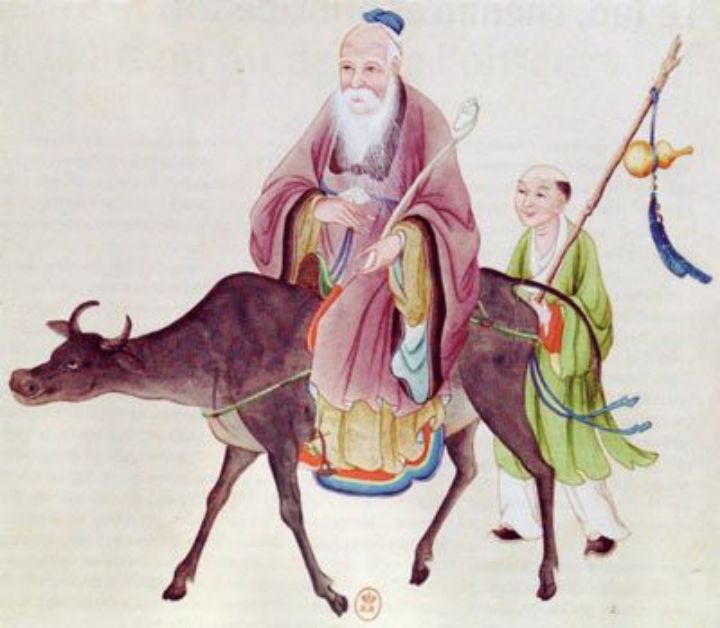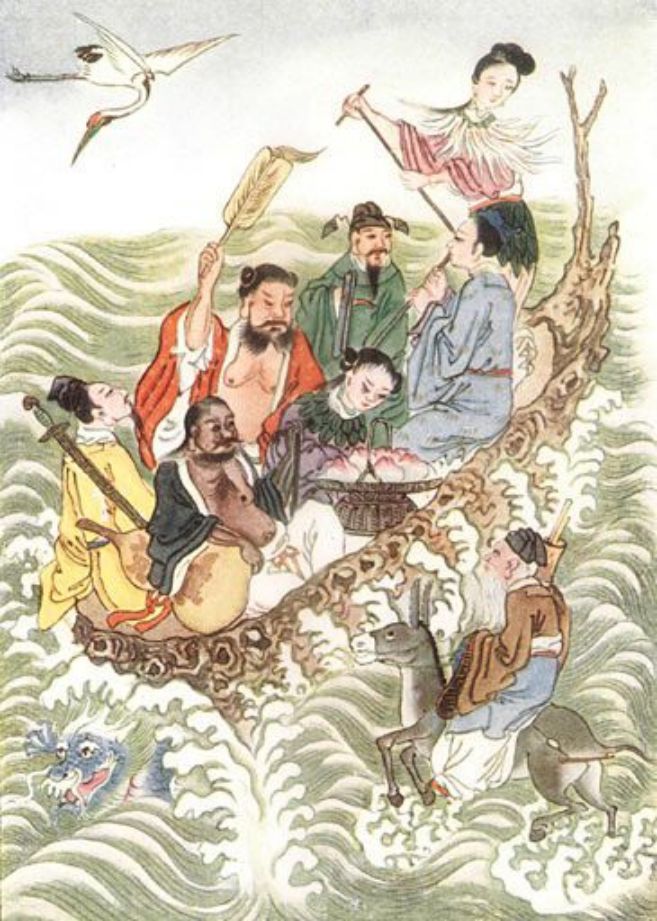Taoism and Tao Te King
An inspiring work that spans the ages and centuries, the Tao-tö King presents the principles of Taoism and is faithful to the thought of Lao-tseu, the "old master".
According to legend, Lao-tseu, an archivist at the imperial court, lived in 570-490 B.C. and rebelled against the many corruptions and basenesses of the government, going into exile from his country.

At the frontier, he agreed to a guard's request to transcribe the fundamentals of his thought for the benefit of mankind. Thus the master created the Tao-tö King, composed of verses and aphorisms expressing the principles of the Dao and virtue.
The Dao, also known as the Way, is the essential foundation of Taoism. Universal, timeless, indeterminate and unlimited, "the name we wish to give it is not its proper name".
It is the unity and fundamental order of all things, and "is to the universe what streams and valleys are to the river and the sea".
The Dao is the origin and essence of all beings and things, the universe in perpetual change, impermanent and always in motion.
Consisting of the intrinsic forces Yin and Yang and the vital breath (Qi), present in every element, it represents the center and original purity of all things.
Like a circle, the Dao is made up of heaven and earth, with man and nature linking the two.
It represents supreme harmony, in which limits and dualities are excluded.
Thus, all that is part of the Dao is complementary: good and evil are unified, "being and nothingness are generated, voice and sound harmonize and before and after follow one another";
they are not opposites, but inherent to each other.

Non-being
Non-being (wu hsü) is a fundamental principle of Taoism. It is analogous to the void, the creative source of infinite possibilities. Thus, "the Dao is like a vase, which use never fills".
Emptiness is at the origin of all things, which necessarily need emptiness to be created, as "being comes from non-being". Fullness, on the other hand, is limited and determined; it is acquired and remains superficial, whereas emptiness represents the innate and original aspect of the elements.
Non-being is therefore the indeterminate, a practice that enables us to reach the center of ourselves once again, without the rationalism and knowledge that distort our perceptions, and brings us closer to the Dao, the very source of life.
"All that emanates from the Dao is monotonous and tasteless", so the wise man appreciates blandness, as he comes into contact with the indeterminate, stripped of artifice.
Thus freed from our limited and constraining aspects, we return to our primary aspect, "to the suppleness of a newborn baby", to whom all potentialities are offered and to whom all possibilities are lent.
To put the principle of non-being into practice, we need to center ourselves and clear our thoughts, which are programmed and influenced by our consciousness and our environment. We must detach ourselves from all that is material and superfluous, for "the saint is careful not to hoard; by devoting himself to others, he enriches himself".
We must listen to our intuition rather than our rational thinking, which is shaped and determined. The wise man "neglects his self, (which is determined) and his self is preserved".
Thus, he must be detached from his knowledge, fears and ego-induced desires, which can distort his perceptions and lead him away from the Dao. Knowledge is therefore perceived relatively, "for to know is not to know".
"He who devotes himself to study increases day by day, he who devotes himself to the Dao decreases day by day".
In this way, knowledge fills the emptiness within us and, by the same token, limits us. The Dao, through non-being and non-action and the absence of desires, enables us to achieve our full greatness by diminishing the fullness within.
Non-action
Non-action (wu-wei) is also an important element of Lao-tseu's thought. Action presupposes a will to act, a goal, and is therefore hindered by determined thought. Even sight is distorted, preventing us from seeing the essence of beings and things, as it remains limited to the superficial; "thus, the great man sticks to the depths and not to the surface".
Non-action consists in the spontaneity of action, which does not need to be anticipated or reflected upon. By freeing ourselves from our intellect, we show ourselves ready to welcome what presents itself without anticipation. "The saint knows without traveling, understands without looking, accomplishes without acting" ;
he "undertakes nothing great and can thus perfect his own greatness" he remains unselfish and available to receive.
He tries to unify himself with nature, in order to feel its essence. Drawing on the example of nature, where action unfolds spontaneously, action must be authentic and in harmony with inner intuition. The homeostasis between human action and nature must be preserved, and by practicing "non-action, all will remain in order".
The purpose of Taoism
The aim of practising taichi, wu-hsü and wu-wei is to achieve supreme harmony by acting in accordance with the Way, to return to the original unity of the Tao: "merge all the lights (virtues), unify all the dusts (defects), that is the supreme identity".
Perfect harmony and a return to the Tao can be symbolized by the resonances of the universe, which transcend all that is part of it. At the heart of the Dao, these resonances are harmonious, making everything in the universe vibrate in unison.
Total resonance can be compared to two lutes, where the strings of one would vibrate those of the other, producing an undifferentiated sound that unifies humanity and nature.
The eight immortals

The eight immortals cross the sea
Clockwise from the stern:
He Xiangu , Han Xiangzi,Lan Caihe, Li Tieguai, Lü Dongbin, Zhongli Quan, Cao Guojiu and (on the donkey) Zhang Guolao
Lü Dongbin and Zhongli Quan are often considered leaders of the group. Another Taoist hermit, Liu Hai (??) or Liu Haichan (???), sometimes replaces Zhang Guolao in Jiangxi and Lan Caihe in Taiwan
1/ Cao Guojiu uncle of a Song emperor, depicted in court attire and holding a jade plaque, the badge of his nobility, or a pair of castanets; he is the protector of actors
2/Han Xiangzi, nephew of the scholar Han Yu, shown with a flute, patron saint of musicians
3/He Xiangu, shown holding a lotus flower.
4/Lan Caihe, eccentric beggar shown in a blue robe, wearing only one shoe and carrying a basket of flowers.
5/Lu Dongbin, Taoist alchemist, shown with a sword as if righting wrongs.
6/Tieguai Li à la canne de fer" (Li with an iron cane), an often drunken lame man depicted with a cane and a calabash containing alcohol.
7/Zhang Guolao Taoist master, often depicted on a white donkey, with a yugu (percussion musical instrument); patron saint of painters and calligraphers
8/Zhongli Quan or Han Zhongli (???), Han dynasty general; plump, he carries a fan to revive the dead.